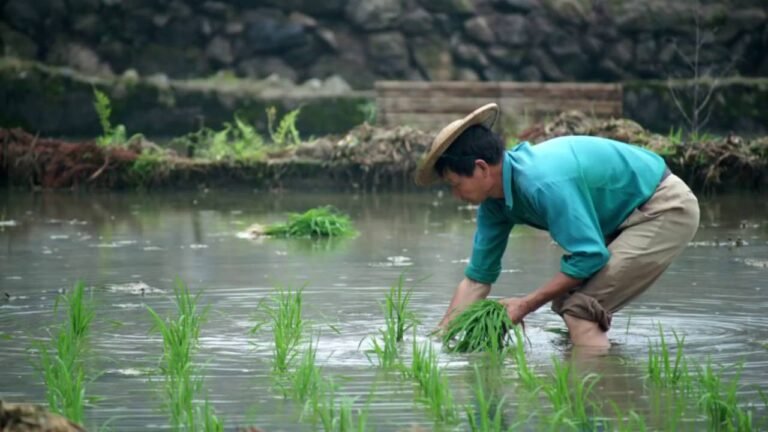The cultivation of a new salt-tolerant hybrid rice variety, ‘ingjing’, which is first-class high-quality, resistant to bacterial blight and yields more than 400 kg per 650 square meters under a salinity of 3 per cent
China’s saline-alkali-tolerant rice technology has continuously made new breakthroughs. China’s Hainan province harvested the first batch of Salt-Alkali-Resistant Rice. The output of a new variety of saline-alkali-resistant rice is 540.49 kilograms per 650 square meters. For the first time, Hainan province cultivated saline-alkali-resistant rice or seawater rice.
China’s National Salt-Alkali-Tolerant Rice Technology Innovation Centre has developed a few varieties of salt-alkali tolerance of rice and the centre is developing more varieties of seawater rice. China is taking the initiative for the food security of the country which has been threatened by rising sea levels.
According to the government media, in recent years National Salt-Alkali-Tolerant Rice Technology Innovation Centre continued to make breakthroughs in salt-tolerant rice output, with yield in 2019 reaching 295 kilograms per 650 square meters. In 2021 it increased to 590 kilograms per 650 square meters and in 2022 maximum yield reached 691 kilograms per square meter.
In a span of the last 10 years, China’s seawater rice harvesting area has increased. In 2022 it has reached over 66,000 hectares, by the end of 2021 the planting area was 40,000 hectares. 10 provinces in China such as the northeast’s Heilongjiang, Shangdong, Jiangsu and Zhejiang provinces in the east, Northwest China’s Xinjiang region, and North China’s Inner Mongolia region are cultivating seawater rice.
Tang Wenbang, director of the National Saline-Alkali-Tolerance Rice Technology Innovation Centre informed about the progress of research in saline-alkali-alkali-tolerant rice. He said, “These achievements include more research of the key gene STRK1 has significantly improved the salt-alkali tolerance of rice. The cultivation of a new salt-tolerant hybrid rice variety, ‘ingjing’, which is first-class high-quality, resistant to bacterial blight and yields more than 400 kg per 650 square meters under a salinity of 3 per cent. Another variety Liangyou 326 has entered the national production test, which can meet the demand for varieties developed and utilised in coastal saline-alkali lands in southeast and southern China. The use of the third-generation hybrid species of indica and japonica yields more than 300 kg per 650 square meters under 6 per cent salinity. A new combination of salt-tolerant hybrid rice Sanyou 9; a special fertiliser for salt-resistant rice Jinkuizi compound microbial fertiliser was developed and the average yield increased by 19.6 per cent compared with the control in 11 experimental demonstration sites for two consecutive years.
Saline-alkali-tolerant rice has strong adaptability. It is not only resistant to saline-alkali, but also resistant to wind, waterlogging, and pests and diseases. In the future, it can turn more barren beaches into fertile fields and better protect national food security. Compared with ordinary rice fields, the yield of rice in saline-alkali fields is lower, but the taste of rice is better than that of ordinary rice fields, the nutritional value of saline-alkali-tolerant rice is extremely high, and the content of trace elements such as calcium, iron, zinc, and selenium is higher than that of ordinary rice fields. White rice is 2 to 3 times higher, and its sugar conversion rate is relatively low in the human body, which is very suitable for people with diabetes and high blood sugar.
China has over 6 lakh hectares of saline-alkali land with rice planting potential, which is an important strategic reserve of cultivated land. The cultivation and application of saline-alkali-tolerant rice varieties and supporting key technologies, based on the output of 300 kg 650 square meters, 6 lakh hectares of saline-alkali land can increase the annual production of rice by 30 billion kg, feed an additional 80 million people. This can fulfil the Chinese rice bowl and comprehensively utilising saline-alkali land is an important way to implement the strategy of storing grain in the land.
Shraddha Warde
shraddha.warde@mmactiv.com

